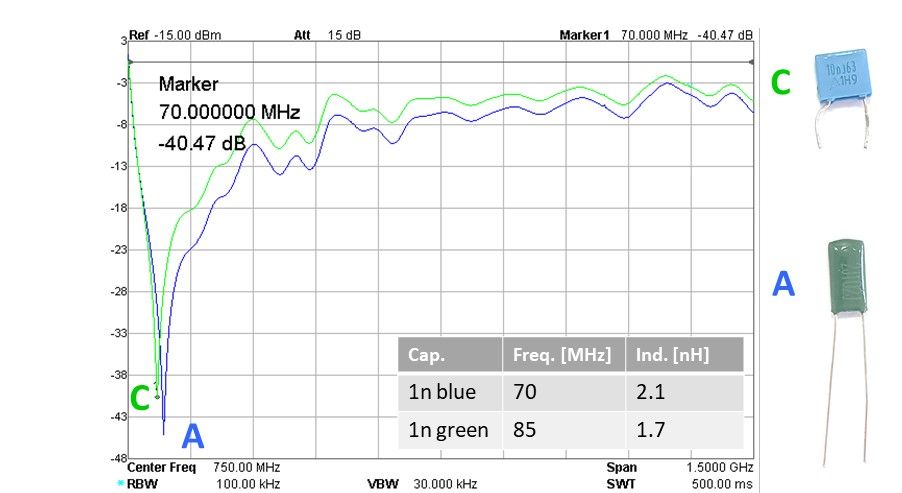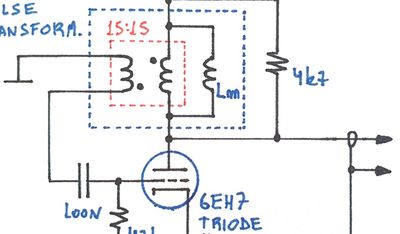The self-resonance of a capacitor imposes the frequency limit where it acts as a true capacitive reactance to the circuit. After the resonance point, the impedance rotates and the capacitor starts to act inductive. This frequency limit can be measured using a network analyzer and a simple JIG.
I used two SMA connectors and a small PCB to make a pass through connection, with a small part of the line exposed. The capacitor to be tested can be soldered, shunting the line to ground. The S21 will present a notch at the resonant frequency, allowing easy measurement.
I tested several types of capacitors that I usually use in homebrew projects. These jellybean parts don't have manufacturer information, being measurement the best way to analyze the behavior. All capacitors had the leads cut to the minimum possible.
Polyester, Disc Ceramic and 1206 Ceramic




A very important thing when prototyping RF circuits is to cut the leads as short as possible, to reduce the inductance. For the 1n polyester capacitor, the resonance frequency is halved when the leads are not cut. The estimated inductance added by the leads is 15nH!

I was impressed by the difference when comparing a disc ceramic with an axial capacitor, both 15pF. The axial part had higher resonance frequency and the notch was much deeper. Probably, the axial construction reduces ESR and acts likely a coaxial connection to ground.

Different Packages and Construction
The construction technique and package will also affect the self-resonance, as the total parasitic inductance of each type will differ.
Here, the green 1nF polyester has 4nH less inductance, increasing the resonance by 15MHz.

Here, the yellow ceramic present a much worse response. I was astonished, because I always thought that these capacitors were better than common disc ceramic.


Voltage rating will also change the self-resonance. The 1kV 100pF shows a parasitic inductance 1nH higher.

Chokes
As I also use axial chokes in low frequency HF and VHF projects, I utilized the setup to also measure the frequency response of them.
For these tests, I changed the JIG for parallel resonance, using the chokes in series with the transmission line.






